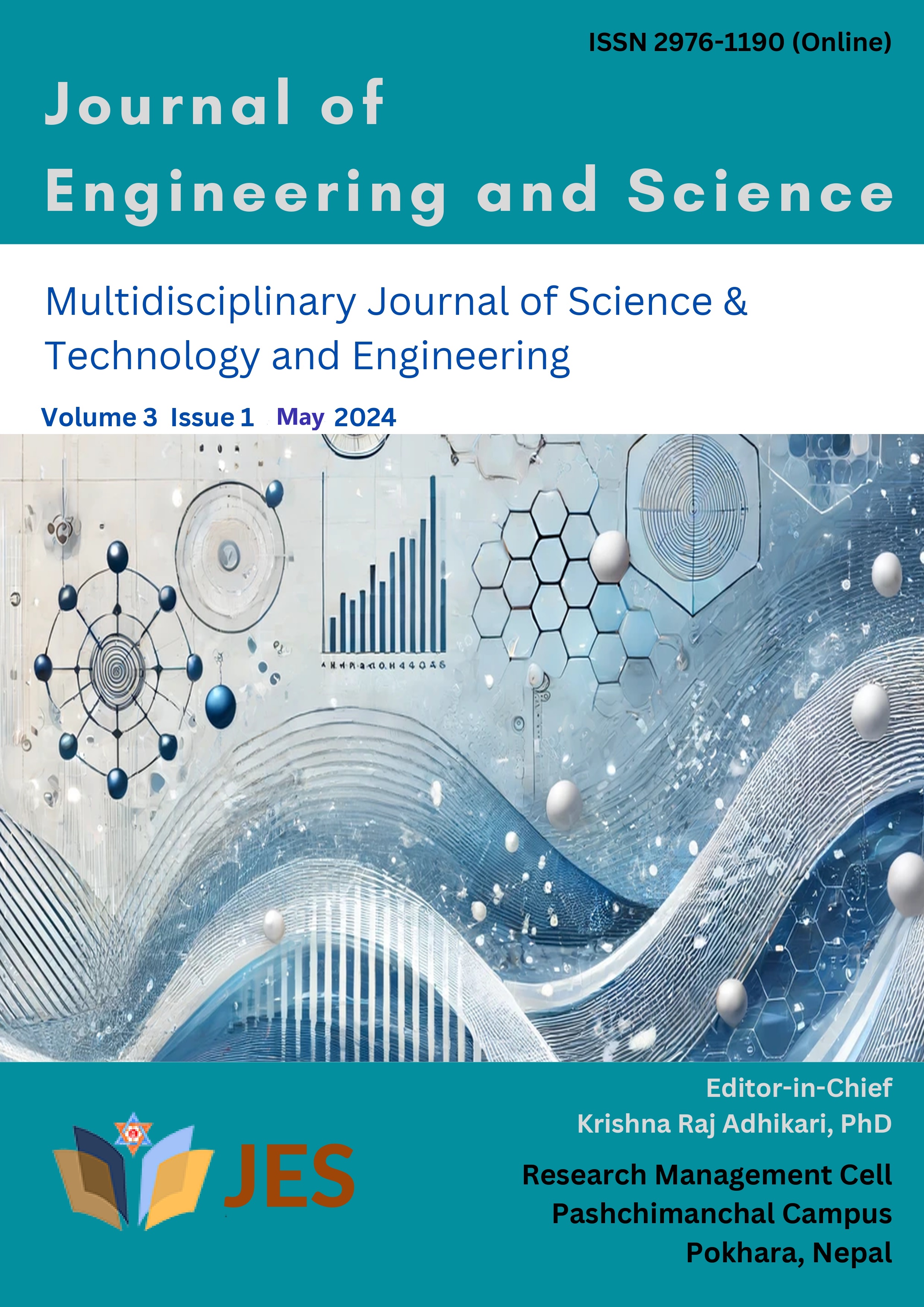Urban Roadside Flooding Analysis Using SWMM: A Case Study of a Road Section in Pokhara Metropolitan City, Nepal
DOI:
https://doi.org/10.3126/jes2.v3i1.66233Keywords:
Urban flooding, SWMM, LID, Roadside flooding, Pokhara cityAbstract
Pokhara City, in Nepal, experiences heavy rainfall during four months of monsoon, causing stress on drainage infrastructures. This situation is exacerbated by poor drainage systems, ineffective urban planning, and rapid urbanization. This study aims to develop mitigation strategies for urban roadside flooding in the Barahi Chowk region in Pokhara City. The focus is to identify the causes and potential solutions for the recurring issue of urban roadside flooding. For this purpose, the study utilizes Storm Water Management Model (SWMM) computer modeling to analyze the hydraulic capacity of existing drainage systems during peak flows. The SWMM modeling reveals that the current drainage usage is between 80% and 100% during peak times, leading to flooding. Consequently, resizing or expanding various drainage sections using SWMM modeling is suggested. The study introduces Low Impact Development (LID) controls, such as rain gardens and permeable pavements, to manage surface runoff. Implementing rain gardens on just 3% of the impervious area in each sub-catchment showed an average 21.5% reduction in peak runoff and an average 6.68% reduction in the total runoff while implementing 5% in each sub-catchment, permeable pavements reduced peak runoff by 22-26% and total runoff by 8-11%. The research explores the impact of land use and land cover change and unplanned urban growth on roadside flooding, resulting in impermeable urban surfaces that disturb the natural drainage system and infiltration pattern. Thus, the outcomes of this study should be carefully considered by policymakers and stakeholders to address issues through sustainable urban planning and infrastructure development. Also, implementing measures like resizing drains and LID controls appears to be effective in controlling flooding during the study period and should be considered for future studies as well.
Downloads
Downloads
Published
How to Cite
Issue
Section
License
Copyright (c) 2024 The Author(s)

This work is licensed under a Creative Commons Attribution 4.0 International License.
CC BY: This license allows reusers to distribute, remix, adapt, and build upon the material in any medium or format, so long as attribution is given to the creator. The license allows for commercial use.




